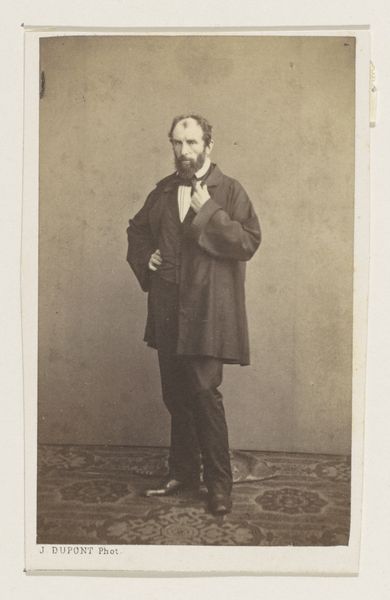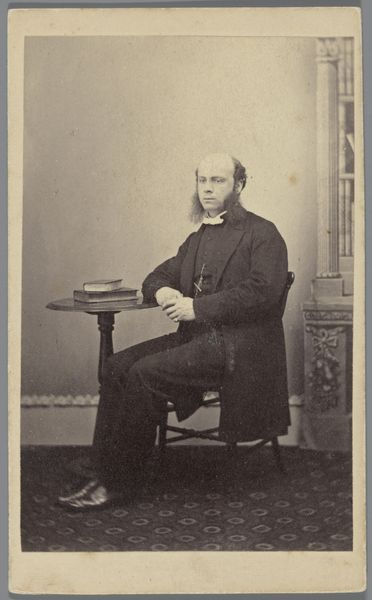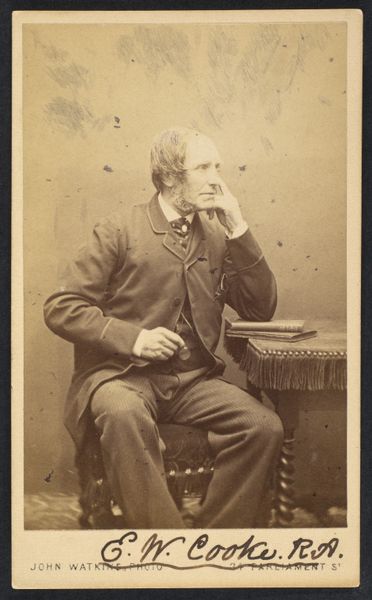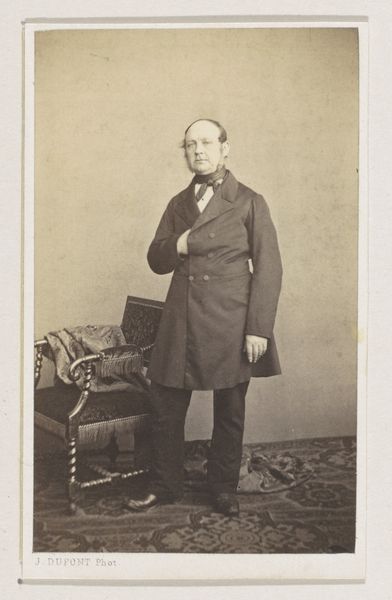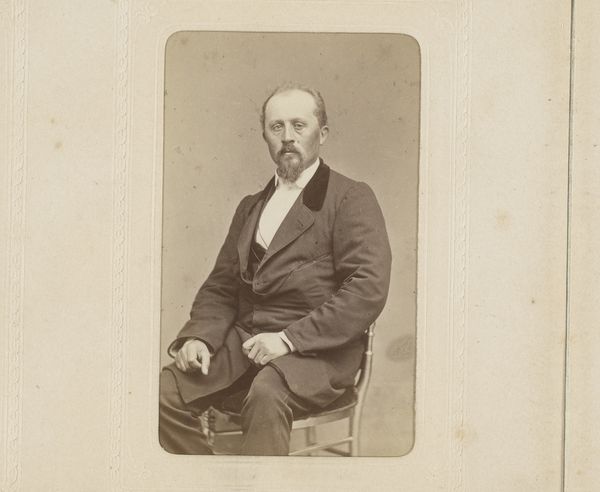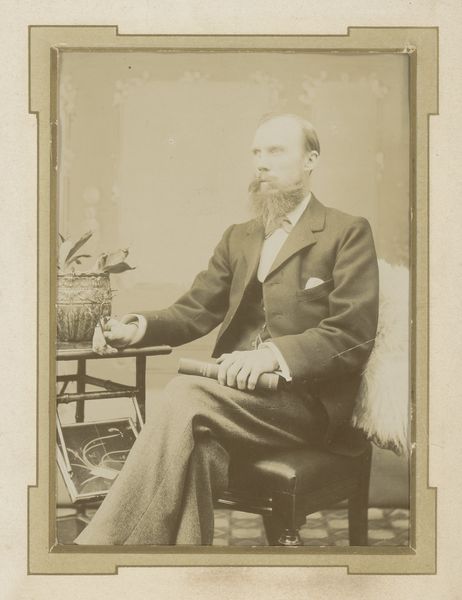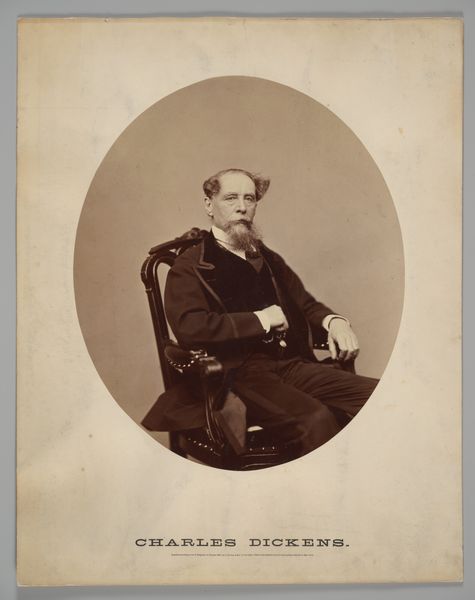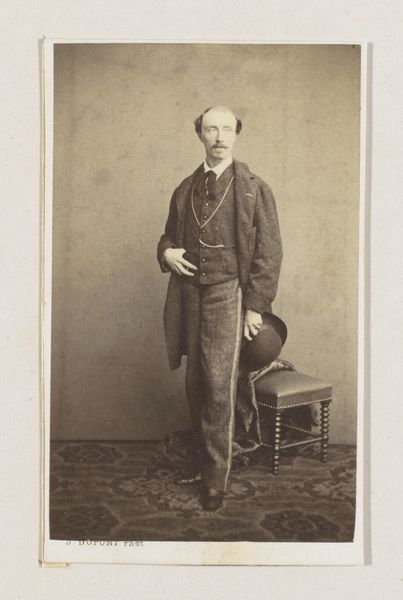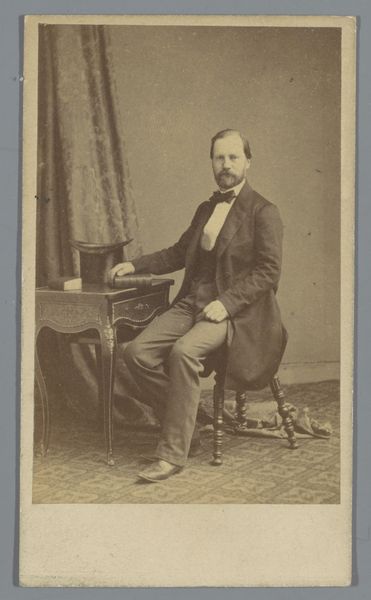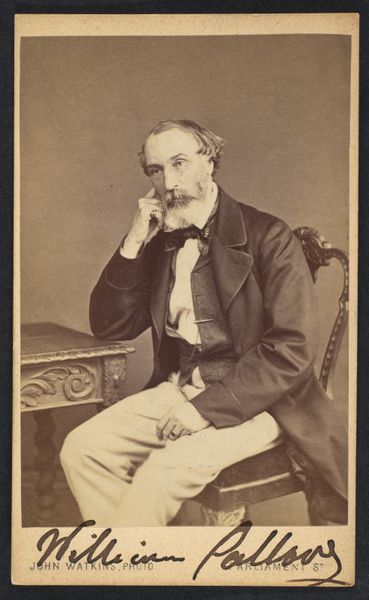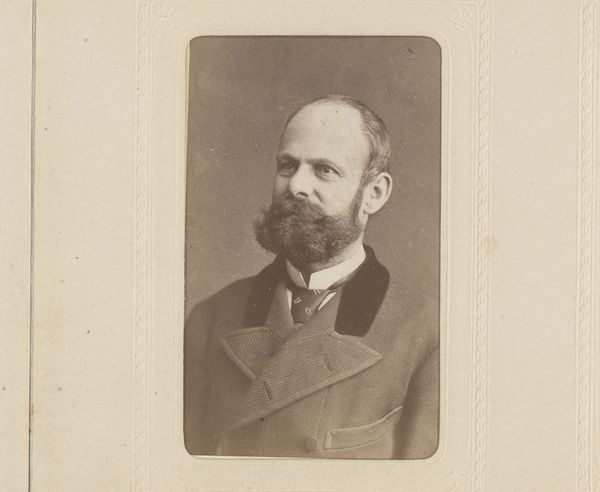![[The Earl Canning, K.G., K.S.I., G.C.B., Calcutta] by Bourne and Shepherd](/_next/image?url=https%3A%2F%2Fd2w8kbdekdi1gv.cloudfront.net%2FeyJidWNrZXQiOiAiYXJ0ZXJhLWltYWdlcy1idWNrZXQiLCAia2V5IjogImFydHdvcmtzLzkyNzZkODFkLTFlM2QtNDAzNy1hZDNmLWQ0OWExOTg4OTEyMi85Mjc2ZDgxZC0xZTNkLTQwMzctYWQzZi1kNDlhMTk4ODkxMjJfZnVsbC5qcGciLCAiZWRpdHMiOiB7InJlc2l6ZSI6IHsid2lkdGgiOiAxOTIwLCAiaGVpZ2h0IjogMTkyMCwgImZpdCI6ICJpbnNpZGUifX19&w=3840&q=75)
[The Earl Canning, K.G., K.S.I., G.C.B., Calcutta] 1858 - 1861
0:00
0:00
daguerreotype, photography
#
portrait
#
daguerreotype
#
photography
#
realism
Dimensions: Image: 26.5 x 21.7 cm (10 7/16 x 8 9/16 in.) Mount: 33 x 26.4 cm (13 x 10 3/8 in.)
Copyright: Public Domain
Editor: Here we have a daguerreotype from between 1858 and 1861 by Bourne and Shepherd, titled "[The Earl Canning, K.G., K.S.I., G.C.B., Calcutta]". It’s quite formal, very proper… What stands out to you? Curator: I see a carefully constructed image, undeniably a portrait, but also a powerful statement about British colonialism in India. The Earl Canning, the Governor-General, is depicted in a seemingly casual pose, yet everything in the composition speaks of authority and control. Look at how he's positioned in relation to the desk and the documents he's reviewing; how does this framing impact your interpretation of the photograph? Editor: I suppose it does create a sense of him being in command. I guess I hadn’t really thought of it in terms of colonialism; I was mostly thinking about photographic techniques. Curator: Precisely! This photograph isn't just about capturing a likeness. It's a visual representation of power dynamics, of British governance imposed on Indian society. The very act of photographing Canning in Calcutta, within the studio of Bourne and Shepherd, who were the preeminent photographers of British India, is itself a statement about the reach and influence of the Empire. What narratives does the photograph actively obscure? Editor: The local perspective, definitely. It's a very one-sided representation of power. I guess it is pretty biased. Curator: Indeed. It highlights the need to critically examine whose stories are being told and whose are being omitted within visual representations of historical events. How do you think the photograph may have been viewed differently at the time compared to today? Editor: Back then it was probably just seen as a normal portrait of an important person, but now we're more aware of the bigger, colonial context. Curator: Absolutely. Reflecting on how our understanding shifts with time and new awareness is invaluable. Editor: This makes me think about representation a lot differently! Curator: As it should. Art invites ongoing critical analysis.
Comments
No comments
Be the first to comment and join the conversation on the ultimate creative platform.
